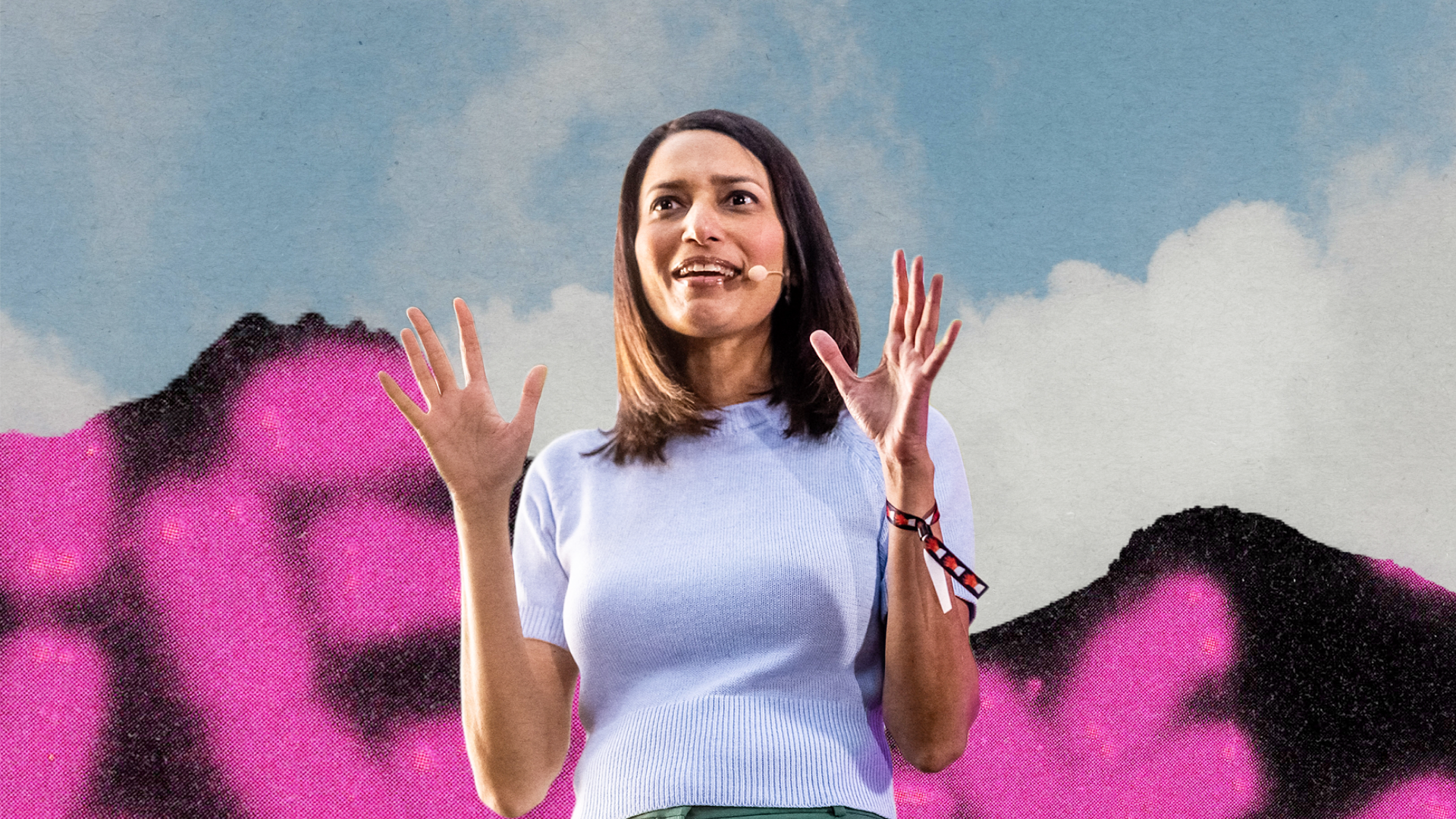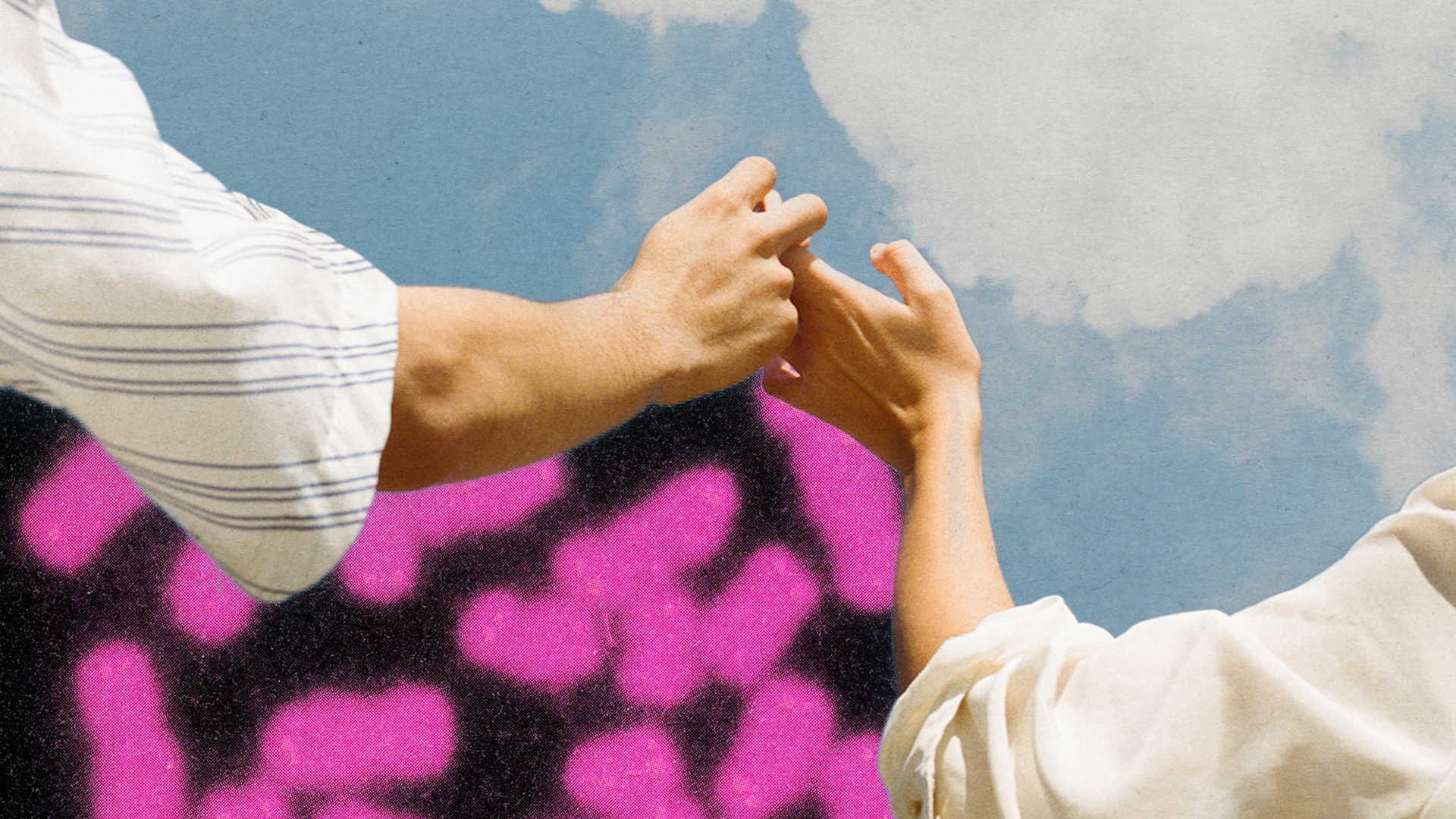We Can’t Outperform Our Biology

If you want to understand the link between our inner health and that of our planet, there is no better person to listen to than physician-educator and science communicator Parneet Pal.
Parneet was the first generation of her family in Mumbai, India to go to college. Entering medical school at the age of seventeen, she worked her way up to a medical residency in physical medicine and rehabilitation at Harvard Medical School, following an internship in internal medicine at Columbia University’s Vagelos College of Physicians and Surgeons, and a master’s degree in exercise and movement science at the University of Oregon.
Today, Parneet works at the intersection of business, lifestyle medicine, and behavior change, looking for the connections and interdependence within human and planetary systems that make them resilient and regenerative. She has designed lifestyle management programs, has served as chief science officer at a San Francisco-based start-up focused on stress, burnout, and loneliness in the workplace, and currently works with and trains executive teams and organizations to optimize health and performance and its impact on leadership and planetary wellbeing.
Her talk on mitochondria at this year’s festival, The___Dream was so resonant that we delved deeper into her biology-meets-business worldview to share some of that inspiration with you.
Interview by Tim Leberecht

—What are mitochondria?
Think of mitochondria as the seat of all life. Mitochondria are the parts in all plant, animal, and human cells that regulate most life-sustaining chemical reactions: breaking down food to generate energy, hormone production, regeneration, and gene expression. They are the masterminds that balance growth versus repair in our body so that every organ can function at its best. Our cells can only stay alive within a very narrow pH and temperature range—the safe operating zone—and mitochondria make sure that they do.
—When and why did you fall in love with mitochondria?
Mitochondria are a proxy for my love of biology and human physiology. Like everyone else, I first learned about mitochondria in high school biology and then more about their nuanced functions in medical school. To this day, I’m blown away thinking of the fateful engulfment of an ancient bacterium by an ancient archaeon (two types of single-celled organisms, the first forms of life) about 1.5 billion years ago. This ‘endo-symbiosis’ was beneficial to both: the bacterium was protected from predators and the archaeon had a reliable source of energy production.
That bacteria evolved into present-day mitochondria, powering the development of all forms of life, through their ability to use oxygen to break down food into ATP (adenosine triphosphate), the currency of energy in cells, and maintain various aspects of metabolism.
Later, in 2002, I read William McDonough’s groundbreaking book Cradle to Cradle: Remaking the Way We Make Things and started following the climate and sustainability conversation. I began noting the parallels between the concepts of renewable energy, circularity, sustainability, regeneration, restoration, soil microbiome, and collaboration on the planetary scale and their counterparts on the cellular scale within mitochondria. And of course, all that made sense, since we are part of nature, and our bodies follow the same design principles as the rest of our planet.
In recent years, my infatuation turned to true enduring love with advances in medicine pointing to mitochondrial health as the root cause (and solution) to most of our lifestyle-related physical and mental disorders, such as heart disease, cancer, diabetes, Alzheimer’s disease, Parkinson’s disease, autoimmune and mood disorders, as well as aging and longevity.

—When and why did you become so passionate about health?
Growing up in India, I had a paradoxical experience of health and well-being: on the one hand, we had a rich ancient culture and science that emphasized prevention and the connections to the planet; on the other hand, during medical school, I witnessed extreme human suffering arising from health inequities.
When I moved to North America for my medical residency, I was surprised that the health inequities persisted and I became increasingly disenchanted by our global healthcare system, focused on a narrow perspective of ‘sick care.’ Health is an emergent property of the systems we live in, and our systems are currently set up for us to fail.
On a more personal level, I experienced a deep sense of powerlessness and loss of meaning in my work when treating my patients, and when navigating the grief and loss because of chronic disease in my extended family. What helped me regain my passion for health was a return to what true ‘health’ means: not just an absence of disease, but complete physical, mental, emotional, social, and ecological well-being.
Health doesn’t happen in the doctor’s office; it happens at work, at home, and in public spaces. Every physical, emotional, social, environmental, and ecological exposure in our daily lives (called the exposome) interacts with and influences our mitochondrial metabolism and gene expression in good or not-so-good ways, which improves or deteriorates our health.
For me, it is important to articulate this empirical, scientific connection, and interdependence between our inner and outer ecologies—beyond the more metaphorical one. Once you truly understand this exchange and appreciate the subtleties, it is hard to stay apathetic about both personal and planetary health.
This is where science is so empowering. When we pay attention to our environment, lifestyle, and mitochondrial health, we can prevent up to 80-90 percent of all chronic diseases that currently account for the majority of our healthcare spend and suffering.
I’m an educator at heart. My work pivoted from clinical practice to translating, designing, and communicating these evidence-based strategies and ideas, especially in the workplace where we spend most of our lives. My goal, simply, is to help people stay well and not fall sick in the first place.
—You argue that the energy crisis is an inner energy crisis, and that sustainability requires inner sustainability. What does that mean in concrete terms?
We currently have all the technology and solutions we need to create well-being for all on a stable planet within one generation, as modeled by the Earth4All scientific report in 2022. Yet we are alarmingly short of reaching our sustainability targets in time, despite all the good work being done by so many on the front lines.

—Why are we, as a collective humanity, stuck in old repetitive patterns of thinking and doing?
One key answer can be found in the skyrocketing rates of stress, burnout, and chronic disease globally—heart disease, cancer, diabetes, obesity, autoimmune and mood disorders—triggered by all-time high rates of cellular inflammation in our bodies. The root cause of this inflammation is an imbalance in mitochondrial function (more growth, insufficient repair) resulting from inattention to our lifestyles: how we eat, move, sleep, and manage our stress.
Not only does inflammation cause disease, but it also affects our moment-to-moment decision making. Our biology perceives it as a threat to survival, making us want to grab any resources we have in sight. We become impulsive, unable to delay gratification, and resort to short-termism. In this self-focused state, trust and empathy for others decline. The fallout: unbridled consumerism, a desire for unmitigated growth at all costs in business, political short-sightedness, addiction of all kinds, as well as an inability to break old habitual patterns and systems.
“In a moment of crisis, and we live in an age of polycrisis, we can’t outperform our biology.”
I like to say that our behaviors don’t rise to the level of our psychology but fall to the level and quality of our cellular energy. Herein lies one of our most powerful leverage points in the system. By starting with, and optimizing our lifestyle and mitochondrial health, reducing inflammation, and improving moment-to-moment decision-making for ourselves, our businesses, and the planet, we can start to bridge the gap between inner and outer sustainability.
My message is always one of agency. It’s time to take back our power, shift the narrative and make our personal health an asset, not a liability in the sustainability transformation.

—What can each of us do to start living healthier lives that foster inner sustainability?
The key to behavior change is clarifying and aligning your values with action. How will better health, increased energy, and inner sustainability allow you to enact what is truly meaningful for you?
For example, it may be more quality time with your family or perhaps building that outer sustainability project with greater creativity or getting your company to that next level of impact you’ve always wanted or simply feeling good in your body and mind.
With that alignment in place, start small. Focus on consistency, not intensity. Pick any of the key pillars of lifestyle: what you eat, how you move, sleep, or manage stress (mental, emotional, and social wellbeing), and investigate where you might be over-indexing on growth (productivity) and neglecting repair. Make that small behavior shift, and then do it again tomorrow, and the next day. This creates momentum, and the reward of feeling better inspires you to do more.
Inevitably, life will get in the way, and you will forget to do that new habit. And that’s perfectly okay—it is an essential feature of the graph of behavior change. You simply start again. Having a supportive like-minded community (friends, family, co-workers) who can help you stay accountable, but also offer compassion when you fail, makes all the difference.
Two specific examples of impactful starting points that are good for both personal and planetary health are: eating more whole, plant-based foods that feed your gut microbiome (and mental-emotional health); and aligning your daily routines to your biological circadian rhythms (eating and moving during the day when the sun is out, and rest and sleep when the sun sets). Your mitochondria will love you back by giving you more energy, focus, stable moods, and a longer life.
—Why do you think so many of us neglect our health and mental well-being? Is it just inertia and laziness?
I want to preface this answer by saying that it only applies to those of us lucky enough to reflect on such matters and not to the part of the global population struggling to survive daily because of the complex socio-economic systems they find themselves in. The stories and narratives around health and well-being are currently both inaccurate and disempowering: that it’s hard or unattainable; you won’t see any benefits until years later; climate change is here, so why bother anyway, etc.
In addition, there is plenty of disinformation and misinformation on the topic, so even when we try we get confused and give up. Finally, our food, agriculture, political, business, medical, and pharmaceutical systems are optimized for profit, not health.
As I mentioned, health is an emergent property of the systems we live in. Rather than feeling guilty, ashamed, or stuck when we fall short of taking care of ourselves, I always encourage leaning into what we truly love or care for.
“When we love something or someone, we don’t need motivation to take care of or protect them. Love fuels the courage to go the extra mile, to do the hard thing, and to create the change that’s needed. That’s how systems begin to shift.”
If you love your family and friends, how might you create a system around them that nurtures their health and longevity? If you care about your coworkers and teams, what changes might be needed in the office or the culture to support their well-being? Hopefully, my talk at The___Dream and this discussion have sparked a new love for our biology and the web of life inside and outside of us that is keeping us alive. Think of the tireless beating of your heart throughout your life that enables you to do every single thing that is meaningful to you. How can you best nurture and protect it?
Since we are biologically interconnected and interdependent, the shifts you create in any system for others will predictably be reflected in your own well-being.
—You told me once that you wanted to become 120 years old. Why is that so desirable? And if technology would allow for it, would you want to be immortal?
I’m inspired by the thought of living a long, healthy, disease-free life—i.e. increasing my health span, not merely how long I live or my lifespan. It would allow me to experience and explore more of the beauty and complexity that life has to offer, and what’s not to love about that?
The concept of being a centenarian is not new. Famously, ancient cultures in the Blue Zones such as Okinawa, Sardinia, Nicoya, Ikaria, and Loma Linda routinely lived that long. Guess what: their lifestyles were optimized for mitochondrial health even though they didn’t know about it. Unfortunately, in the Anthropocene, the systems and lifestyles we’ve created shorten most of our health spans; we’re now seeing children and young adults afflicted with the same chronic diseases that typically occurred much later in life.
With the kinds of longevity research currently in progress, we will develop the technology to extend life for many more years, maybe for all of humanity. Cracking immortality, though, I’m not so sure. It would have to happen soon since the rate at which we’re self-destructing as a species presently might make this whole point moot.
I’ve had the privilege of witnessing the exact moment of death as close as can be, by the bedsides of my patients and both my parents. Birth and death, growth and repair, summer and winter. Respecting the cycles of biology is comforting during moments of challenge by remembering my body has an incredible capacity to regenerate; simultaneously, the prospect of a finite life makes each relationship and moment that much sweeter, more precious, and more beautiful. For now, for me, that’s enough.
Parneet is especially interested in the role of food systems and climate change; circular economies; the application of Kate Raworth’s doughnut model to building thriving cities and nations; and reimagining what ethical business leadership might look like. Want to find out more about her work, including her keynotes and webinars? Follow her on LinkedIn.
